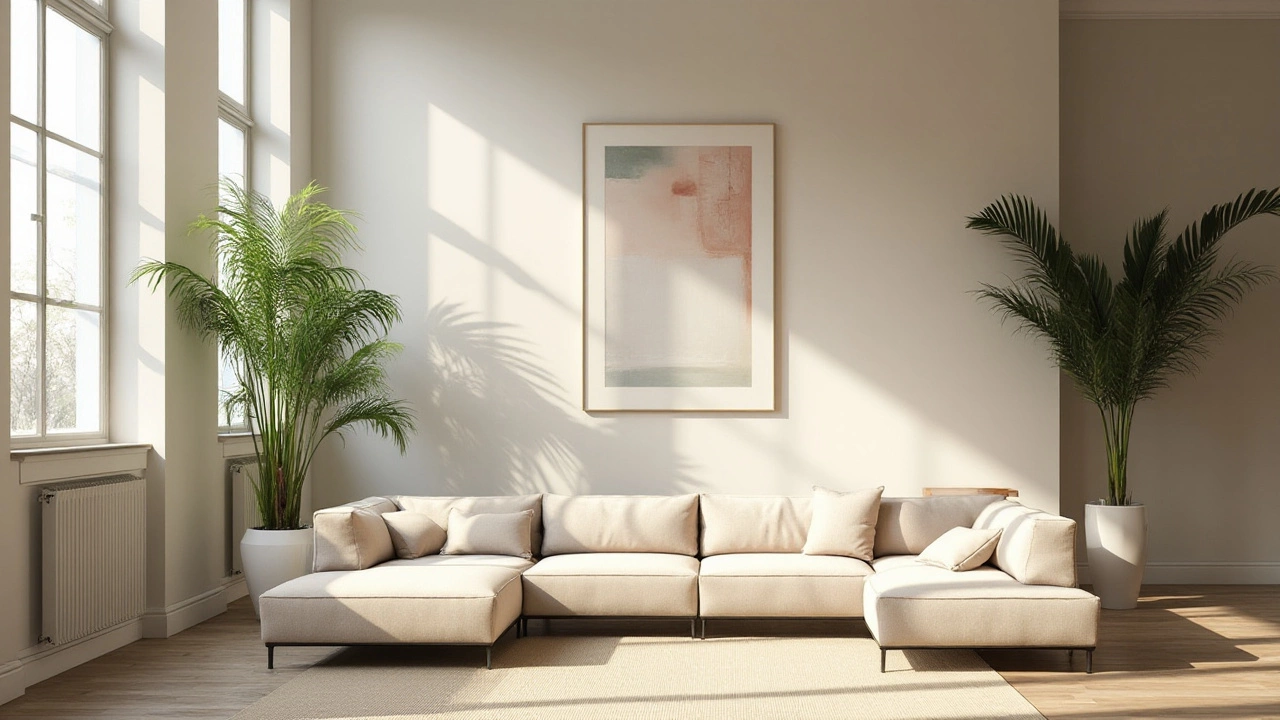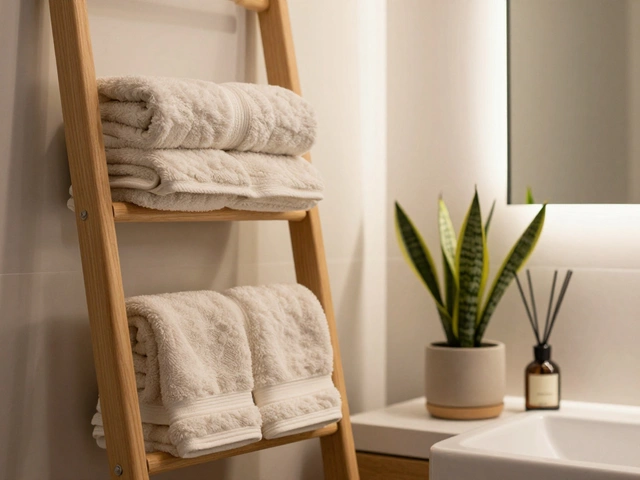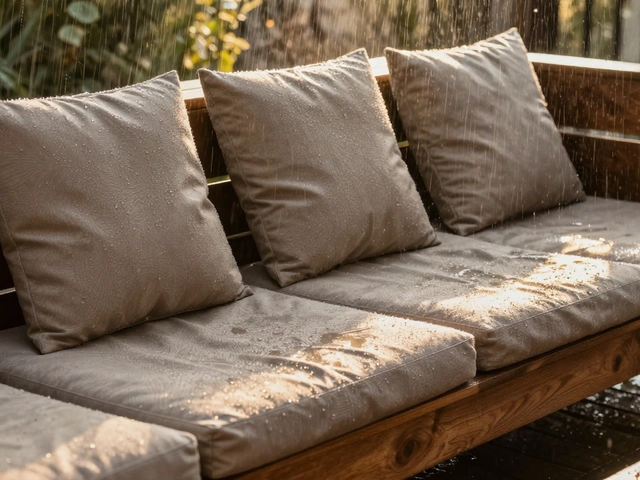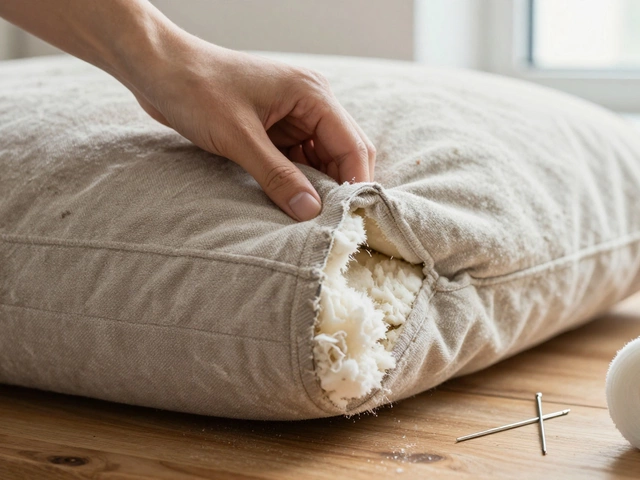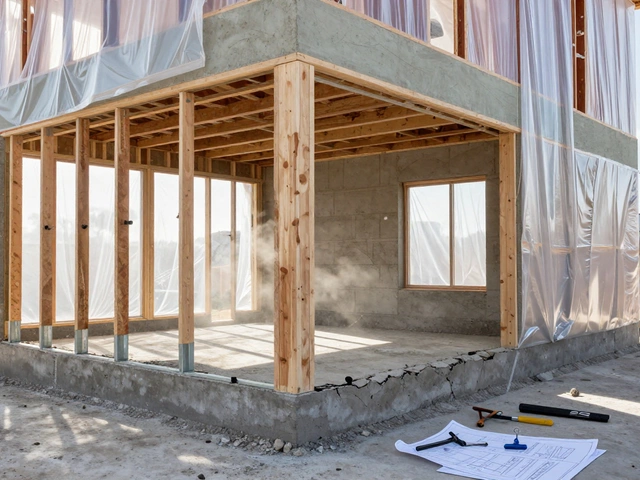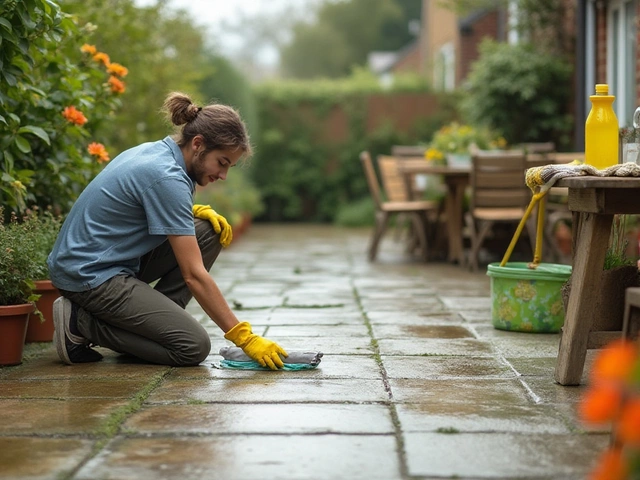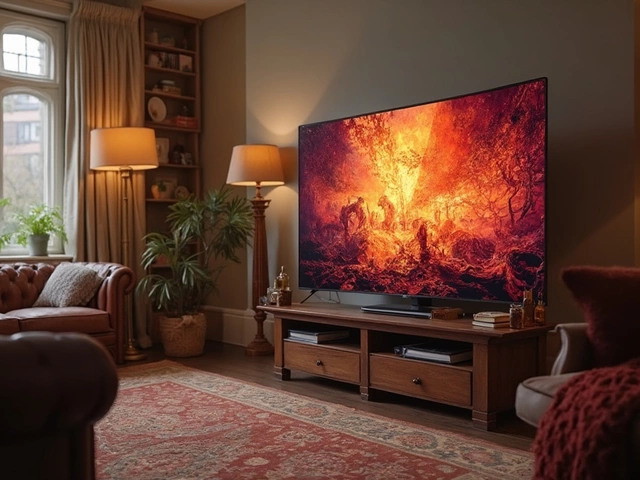Choosing a couch isn't just about picking a piece of furniture; it's about defining the ambiance of your home. In 2025, the most popular couch styles are those that balance beauty, comfort, and practicality. As tastes evolve, modern homeowners are favoring styles that seamlessly blend with various decor themes and offer a sense of individuality.
With an increasing focus on sustainable living, eco-friendly designs are gaining immense popularity. Meanwhile, the revival of mid-century modern pieces offers a nostalgic yet modern appeal. For those who value sleek, straight lines, contemporary minimalist styles remain a staple. On the other hand, some prefer the luxurious embrace of plush and spacious couches that promise ultimate relaxation.
This article explores these trends, helping you make informed choices for your living space. Whether you're redecorating or furnishing a new home, understanding these popular couch styles will aid you in selecting a piece that not only fits your aesthetic but also enhances your everyday living.
- Contemporary Minimalist Styles
- Mid-Century Modern Revival
- Comfort and Functionality
- Sustainable and Eco-Friendly Designs
Contemporary Minimalist Styles
When talking about couch styles, Contemporary Minimalist designs are all the rage in 2025. These styles are characterized by their clean lines, muted color palettes, and practical materials. The appeal of these sofas is simple yet profound: simplicity is at the heart of this style, aimed at creating a serene and uncluttered living space. The growing trend towards minimalism is a reflection of a broader societal shift towards more mindful living, where less is considered more.
Colors such as white, beige, grey, and other neutral tones dominate the minimalist style. These hues provide a perfect backdrop that allows other elements of the room to become focal points. Often designed with high-quality, sustainable materials, these couches are not only stylish but also long-lasting. The trend away from ornate flourishes and towards sleek, geometric forms is part of what makes these sofa trends so versatile, allowing them to seamlessly blend into both modern and more traditional home settings.
"Minimalism is not the lack of something, it is simply the perfect amount of something," reflects John Pawson, an influential advocate of the minimalist approach in design. This philosophy is diligently applied in contemporary minimalist sofa sets, resonating with people who are choosing to reduce clutter and embrace a more streamlined aesthetic.
For those looking to maintain an open and spacious look in their living room, minimalist couches can be a brilliant choice. They don't just save space visually but also encourage the efficient use of space without compromising on comfort and style. Functionality is key, and features such as hidden storage compartments or modular designs that allow for adaptability have become a staple in these designs.
Often, these sofas will incorporate advanced materials like microfiber or bamboo-fiber upholstery, shining a light on the industry's eco-conscious pivot. Apart from environmental benefits, these materials offer durability and ease of maintenance. Many minimalist couches come with detachable cushion covers, which makes them easier to clean, making them a practical choice for families, notably those with young children or pets.
The trend aligns with a growing emphasis on sustainability, with designers and homeowners alike leaning towards furniture that reflects an investment in quality and longevity. With thoughtful design that focuses on lasting appeal rather than fleeting trends, these minimalist sofas are not just fashion statements; they are smart, functional choices for the modern home. Whether in an apartment in the city or a family suburb home, this style resonates with every environment.

Mid-Century Modern Revival
The mid-century modern style has made a significant comeback in recent years, captivating home spaces with its timeless elegance and practical appeal. Originating from the mid-20th century, this design aesthetic is characterized by its clean lines, organic forms, and minimal ornamentation, all of which contribute to its enduring popularity. Drawing inspiration from the cultural zeitgeist of the 1940s to the 1960s, the design emphasizes functionality and simplicity while maintaining a sense of sophisticated warmth in home decor.
The resurgence of mid-century modern sofas in 2025 can be attributed to a collective nostalgia and appreciation for retro styles that integrate seamlessly with contemporary interiors. These pieces are often crafted from high-quality materials like rich wood and soft leather, offering a tactile experience that complements their aesthetic beauty. In essence, these couches do not merely serve as seating arrangements but become focal points in a room, blending art and utility in a harmonious fashion.
The Economist once noted, "The appeal of mid-century design lies in its ability to look both contemporary and classic, hence its revival in millennial homes keen on understated luxury."
One noteworthy characteristic of these popular sofas is their adaptability; they fit smoothly into various settings, whether it is a secluded study or a bustling living room. The colour palettes adopted in mid-century pieces often include earthy tones and vibrant hues, allowing them to complement a range of decor styles. With current trends prioritizing functionality, features such as modular designs and hidden storage continue to attract homeowners who value both beauty and utility. The seamless blend of the old and new is what defines the mid-century modern revival, making it a fascinating topic for design enthusiasts.
For those considering adding a mid-century piece to their home, understanding its design philosophy could be illuminating. Many of these couches are inherently versatile, often featuring easily interchangeable components or extendable sections. This modularity isn't just about flexibility but also sustainability, encouraging use of smaller living spaces and reduced wastage. As eco-awareness increases, more manufacturers are now incorporating sustainable materials like recycled fabrics without compromising the iconic style, ensuring these furniture pieces are as gentle on the planet as they are pleasing to the eye.
| Material | Common Use |
|---|---|
| Teak Wood | Frame and Legs |
| Leather | Upholstery |
| Velvet | Upholstery |
Ultimately, the essence of mid-century modern design lies in its capability to transform and enhance living environments with its unique aesthetics and practicality. As the demand for these styles continues to soar, the range of options available has expanded significantly, offering consumers a wealth of choices when it comes to redesigning their living spaces. By marrying historical influences with present-day needs, the mid-century modern revival not only revives past elegance but also lays a strong foundation for innovative, future-forward furniture design.
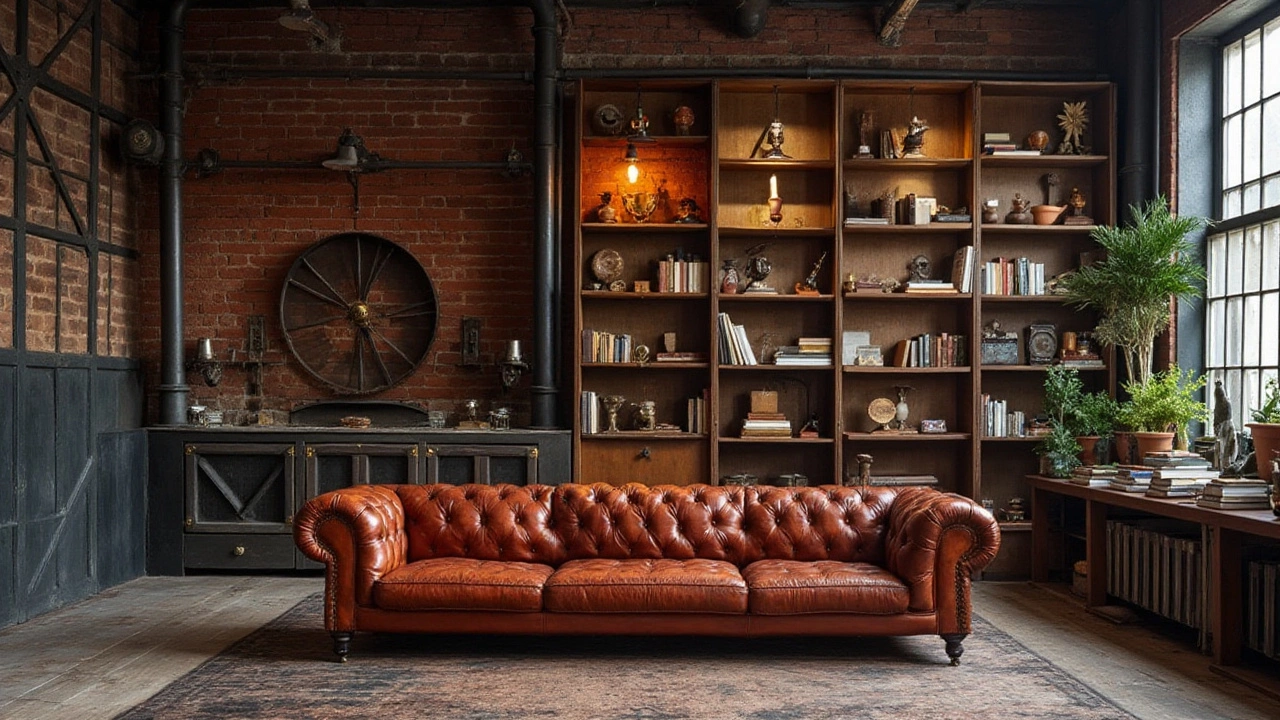
Comfort and Functionality
In recent years, couches that prioritize comfort and functionality have become essential for many homeowners looking to enhance their living spaces. The ability to sink into a sofa after a long day has transcended beyond luxury—it's a necessity. As the hub of relaxation and social gatherings, couches are designed with user-centric features to meet the modern family's demands. Sofas now often come with adjustable headrests, reclining features, and even modular elements that allow customization to fit any room layout. This flexibility makes them a popular choice, accommodating both aesthetic preferences and practical needs.
Today's sofa trends incorporate features that ensure optimal comfort through high-quality materials. Memory foam cushions, known for their contour-hugging properties, are favored for providing steadfast support while retaining their shape. Additionally, microfiber fabrics, celebrated for their soft texture and durability, are often used in couches, offering a luxurious feel that doesn't compromise on longevity. In 2025, it's not just about plushness; people are increasingly choosing couches with ergonomic designs that support proper posture, recognizing the importance of maintaining health even whilst lounging.
Functionality is not just limited to personal comfort but extends to the creative use of space. The advent of multi-functional furniture like sofa beds, sectionals with storage, and tech-integrated designs cater to the urban dwellers' need for space optimization. In cities where apartment living is common, these all-in-one solutions are incredibly appealing. Popular sofas that double as storage units or come equipped with charging ports for gadgets exemplify the fusion of practicality and innovation, meeting the rapidly evolving lifestyle of today's consumers.
The market also reflects an intriguing trend towards sustainable design, wherein comfort and eco-consciousness coexist. Brands are increasingly using recycled or natural materials without sacrificing comfort, diminishing environmental impact. In fact, a survey by a prominent home magazine noted that 45% of consumers prefer couches made from sustainable resources, highlighting a significant shift in buying preferences. This push towards sustainability also aligns with an industry's aspiration to draw the home decor sector towards more environmentally friendly practices.
"A home that considers not only its inhabitants but also its impact on the world is truly a home of the future," says an expert in interior design.
As we continue our journey through the realm of sofa sets, it's insightful to delve into the statistics shaping the comfort and functionality market. According to a report conducted last year, there was a 20% increase in consumer preference for multi-purpose furniture. Notably, the demand for pull-out sofa beds reportedly soared by an impressive 30% in metropolitan areas, reflecting the interconnected balance of comfort, style, and purpose that modern buyers seek. These insights underline the necessity of a strategic approach in choosing a couch that harmonizes effortless style with essential functionality.
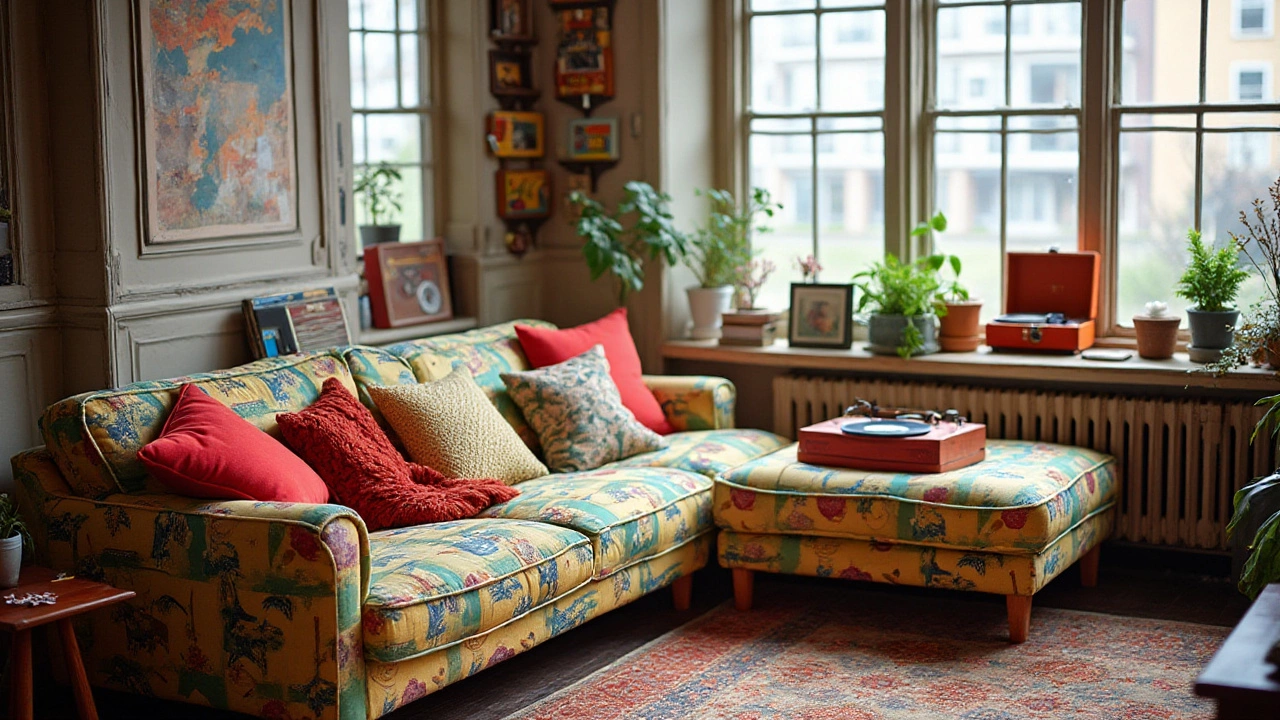
Sustainable and Eco-Friendly Designs
As awareness of environmental issues grows, so does the demand for sustainable and eco-friendly designs in home furniture, especially when it comes to the beloved couch. A popular sofa trend this year focuses on minimizing environmental impact while maximizing comfort and style. Many manufacturers are rethinking their production processes, turning to recycled materials and sustainable practices to craft pieces that are stylish yet gentle on the planet. One noteworthy aspect is the use of recycled textiles and cushion fillings, which not only reduces waste but often results in uniquely textured and colored fabrics that are both durable and visually appealing. Consumers today are increasingly aware of their carbon footprint, and they’re enthusiastic about furniture brands that incorporate recycled metals, wood from responsibly managed forests, and non-toxic dyes and finishes.
Environmental consciousness doesn't mean compromising on aesthetics or comfort. Thanks to innovations in design and technology, eco-friendly sofas now come in a wide range of styles and configurations, rivaling conventional options in both form and function. Fabrication processes have also improved, with water-based adhesives and stains that lessen the emission of volatile organic compounds – those sneaky environmental enemy substances. Companies like Joybird and West Elm have been spearheading this movement by not only prioritizing sustainability in their designs but also educating the public on the benefits of eco-friendly living.
"The future of furniture demands a greener approach, where luxury meets responsibility," says Sarah Thomas, a noted home design expert.It's about finding that comfortable balance between enjoying modern conveniences while being stewards of a healthier Earth.
The surge in demand has also catalyzed innovations in what materials can be deemed sustainable. An interesting development is the rising use of cork and bamboo in place of traditional hardwood. Both resources regenerate quickly and require minimal pesticides or fertilizers, adding a notably earthy aesthetic to contemporary minimalist styles as well as other home decor trends. Moreover, brands are turning towards innovative materials like mushroom mycelium for cushions, which biodegrade harmlessly, contributing even further to a circular economy. An essential component of this movement is transparency, with businesses now offering detailed insights into their sustainability practices, helping consumers make informed decisions. Websites frequently highlight whether products are vegan, biodegradable, or made from repurposed materials, aiding customers on their quest for eco-friendliness without losing track of style.
In today's market, going green often translates to greater value as conscientious shoppers pair their love for design with their drive for a sustainable future. Whether it’s embracing the warmth of reclaimed wood or relaxing in cushions made from plastic bottles, every eco-conscious choice becomes a testament to the shift towards a more ethical consumer culture. This doesn't just apply at the point of sale. Some companies offer buy-back or recycling programs for their old couches, ensuring that they either get a second life or are disposed of in an environmentally friendly manner. As the trend grows, new business models have emerged, including subscription-based furniture services where couches can be leased rather than owned, thereby extending their lifecycle across multiple households. Such services not only offer regular updates to home decor enthusiasts but also support a sustainable living ethos.
